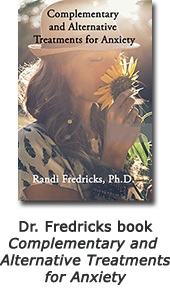
Types of Anxiety Disorders
Anxiety counseling is geared at helping anxiety disorders, a serious mental illness that affects men and women alike. For people with anxiety disorders, worry and fear are constant and overwhelming, and can be crippling – making even the most mundane tasks challenging. Each anxiety disorder has its own distinct features, but they are all characterized by the common theme of excessive, irrational fear and discomfort.
 It’s Time to Feel Better
It’s Time to Feel Better
The five major types of anxiety disorders treated with anxiety counseling are Generalized Anxiety Disorder, Obsessive-Compulsive Disorder (OCD), Panic Disorder, Post-Traumatic Stress Disorder (PTSD), and Social Phobia (or Social Anxiety Disorder).
The descriptions that follow help to differentiate the different types of anxiety disorders and there are also links at the bottom and right that give more details on the particular anxiety disorder.
Common Types of Anxiety Disorders
Panic disorder. People with this condition have thoughts and feelings of terror that happen suddenly and repeatedly with little or no warning. Other panic attack symptoms include shaking, sweating, chest pain, heart palpitations, and a feeling of choking. Many people who have panic attacks report a feeling of “going crazy.”
Obsessive-compulsive disorder (OCD). People with OCD are beset with disturbing thoughts and/or fears that motivate them to conduct specific rituals and routines. The persistent thoughts are obsessions and the performed rituals are compulsions. The classic example of a person with OCD is someone with an excessive fear of germs who constantly engages in hand washing and/or other compulsive cleaning habits.
Post-traumatic stress disorder (PTSD). PTSD is a disorder that develops after someone has had acute stress disorder which has not resolved with time. PTSD typically occurs after a traumatic event, such as experiencing war or other violent incidences. It can also occur after a loss, such as the loss of a pet or a loved one. People who suffer from PTSD usually have ongoing memories and nightmares involving the event.
Social anxiety disorder. Also called social phobia, social anxiety disorder is characterized by an overwhelming worry and self-consciousness about everyday social and business situations. The worry usually has do with a fear of the judgment of others that could results in public embarrassment or ridicule.
 Specific phobias. A specific phobia is an intense fear of something, such as an object or situation. Common phobias include flying, fear of heights, or insects or animals, such as spiders. It is important to note that the extent of the person’s fear is — at some level — excessive in relation to the situation.
Specific phobias. A specific phobia is an intense fear of something, such as an object or situation. Common phobias include flying, fear of heights, or insects or animals, such as spiders. It is important to note that the extent of the person’s fear is — at some level — excessive in relation to the situation.
Generalized anxiety disorder. Generalized anxiety disorder (GAD) is characterized by an excessive amount of unrealistic worry and tension, particularly when there is little or nothing to cause the anxiety. GAD is beyond normal worrying and is a ongoing pattern of constant anxiety and fear over a number of different activities and/or events.
Symptoms of Anxiety Disorders
A person’s symptoms will vary depending on the type of anxiety disorder, but some general symptoms include the following:
- Feelings of uneasiness, panic, and fear
- Obsessive, uncontrollable thoughts
- Nightmares
- Ritualistic behaviors, such as repeatedly switching the lights on and off
- Feeling dissociated
- Problems sleeping due to worry, fear of anxiety
- Cold or sweaty hands and feet
- Shortness of breath
- Palpitations (irregular heartbeat)
- Inability to be still and calm
- Dry mouth
- Uncontrollable shaking
- Numbness or tingling in the hands and feet
- Repeated thoughts or flashbacks of a traumatic event
- Nausea
- Muscle tension
- Dizziness
Anxiety Counseling for Anxiety Disorders
A psychotherapist specializing in anxiety counseling, I can help you to identify the different types of anxiety and what type of anxiety disorder you have and develop a treatment plan on how to help. Anxiety disorders often looks different in everyone. An awareness of these differences helps ensure that the problem is recognized and treated.





